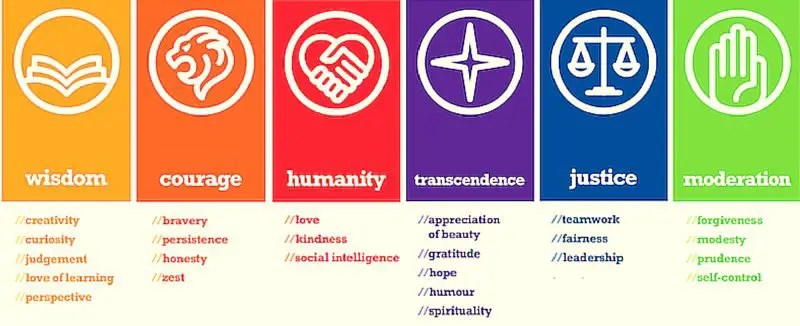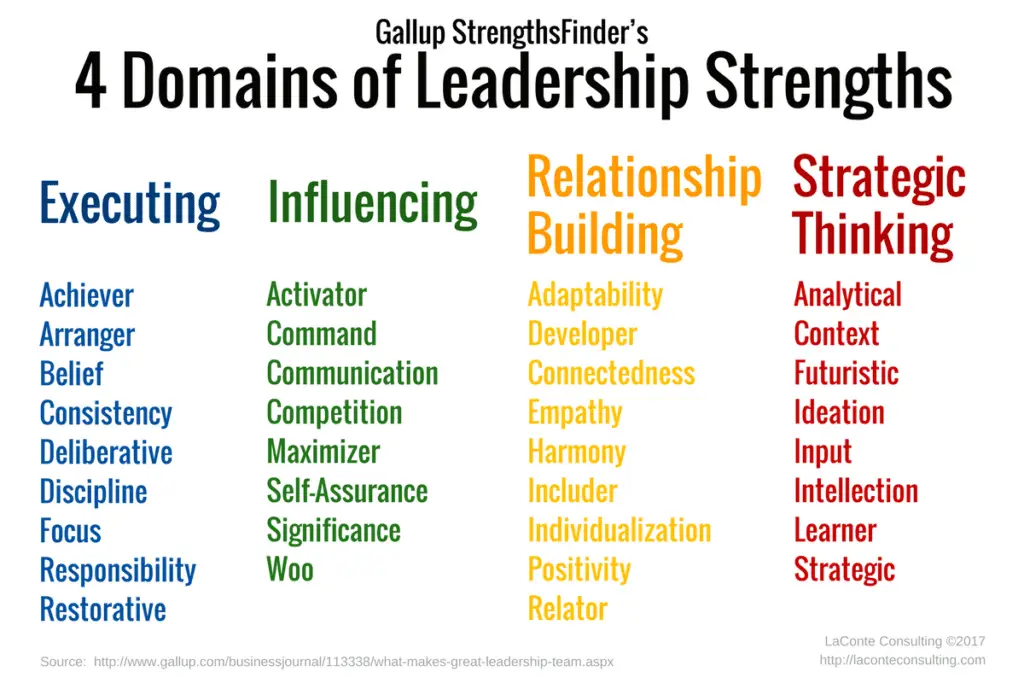[fusion_builder_container admin_label=”Large Screen text” hundred_percent=”no” hundred_percent_height=”no” hundred_percent_height_scroll=”no” hundred_percent_height_center_content=”yes” equal_height_columns=”no” menu_anchor=”” hide_on_mobile=”small-visibility,medium-visibility,large-visibility” status=”published” publish_date=”” class=”@media only screen and ( min-width: 800px ) {padding-top: 0px; padding-right: 5px; padding-bottom: 0px; padding-left: 5px; }” id=”” border_size=”” border_color=”” border_style=”solid” margin_top=”” margin_bottom=”” padding_top=”” padding_right=”15%” padding_bottom=”” padding_left=”15%” gradient_start_color=”” gradient_end_color=”” gradient_start_position=”0″ gradient_end_position=”100″ gradient_type=”linear” radial_direction=”center center” linear_angle=”180″ background_color=”” background_image=”” background_position=”center center” background_repeat=”no-repeat” fade=”no” background_parallax=”none” enable_mobile=”no” parallax_speed=”0.3″ background_blend_mode=”none” video_mp4=”” video_webm=”” video_ogv=”” video_url=”” video_aspect_ratio=”16:9″ video_loop=”yes” video_mute=”yes” video_preview_image=”” filter_hue=”0″ filter_saturation=”100″ filter_brightness=”100″ filter_contrast=”100″ filter_invert=”0″ filter_sepia=”0″ filter_opacity=”100″ filter_blur=”0″ filter_hue_hover=”0″ filter_saturation_hover=”100″ filter_brightness_hover=”100″ filter_contrast_hover=”100″ filter_invert_hover=”0″ filter_sepia_hover=”0″ filter_opacity_hover=”100″ filter_blur_hover=”0″][fusion_builder_row][fusion_builder_column type=”1_1″ layout=”1_1″ spacing=”” center_content=”no” link=”” target=”_self” min_height=”” hide_on_mobile=”small-visibility,medium-visibility,large-visibility” class=”” id=”” background_color=”” background_image=”” background_image_id=”” background_position=”left top” background_repeat=”no-repeat” hover_type=”none” border_size=”0″ border_color=”” border_style=”solid” border_position=”all” border_radius=”” box_shadow=”no” dimension_box_shadow=”” box_shadow_blur=”0″ box_shadow_spread=”0″ box_shadow_color=”” box_shadow_style=”” padding_top=”” padding_right=”” padding_bottom=”” padding_left=”0px” margin_top=”” margin_bottom=”” animation_type=”” animation_direction=”left” animation_speed=”0.3″ animation_offset=”” last=”true” first=”true”][fusion_text columns=”” column_min_width=”” column_spacing=”” rule_style=”default” rule_size=”” rule_color=”” hide_on_mobile=”small-visibility,medium-visibility,large-visibility” class=”” id=”” animation_type=”” animation_direction=”left” animation_speed=”0.3″ animation_offset=””]
Discover your strengths in four simple steps.
Ever want a better answer to the question, What is your greatest strength? than, “Well, I’m really good at binge-watching Netflix, paying more than I should for food, and scrolling through Instagram?”
Don’t get me wrong, those are admirable qualities… for a lazy Sunday afternoon. But they aren’t the type of strengths I’m talking about, and they won’t bring you the life fulfillment you can have.
Your strengths are actually much more innate and large-scale than simple activities.
You have a set of strengths right now, whether you’re aware of them or not.
It might be odd to hear strengths described like try-hard kids in a Hide n Seek game (try and find me, I dare you!); however, our weakness-focused society creates lack of awareness about our strengths.
Just like the seeker eventually discovers the hiders (even if it’s because the hiders get bored and reveal themselves), you, too, can discover your strengths. Click here to skip to the four steps to discover your strengths.
.
What is a strength
A strength is something that you are good at across the board. It must show itself in your thoughts, behaviors, feelings, and actions.
This means that your strength will apply to a broad range of situations and environments, rather than a one-time thing.
You also must like performing your strength. When you do it, it should energize you (and not drain you).
A strength is more than a talent. In fact, talents are almost like stepping stones to strengths.
While a talent is a naturally occurring pattern, it becomes a strength when you can provide near-perfect performance consistently.
It’s like if I had a natural talent for shucking corn. I might have quick hands and a firm grasp. Still, it doesn’t become a strength until I’ve had a lot of experience shucking corn, understand the best corn-shucking methods, and can do it near-perfect every time.
(Wondering what shucking corn has to do with discovering your own strengths? For you starch-hates out there, don’t worry – it doesn’t. It was a bad example, okay! I’m not nearly perfect!)
.
Why You Should Discover Your Strengths
Self-awareness, in general, has many benefits, but there are specific reasons that finding your strengths can benefit your life. Knowing your own strengths will:
- Give you a sense of direction
- Improve your performance
- Help you achieve your goals
- Build your self-confidence
- Enhance your close relationships
- Buffer you from stress
- Encourage you to grow more
- Generate a sense of happiness and fulfillment
Examples of Strengths
As you can probably imagine, there is no universal list of strengths. As much as positive psychologists have tried to nail down specific criteria and labels, nobody has unanimously approved one definition.
For our sake, this isn’t a bad thing.
This openness can be compared to competing gelato shops on the same street. Every shop will have a counter full of delicious frozen dairy flavors, but the names and specific types might be different in each place.
Of the standard flavors, one shop might stick with the well-known names (chocolate, vanilla, strawberry). Another shop, on the other hand, might spice it up a little bit (mocha fudge, vanilla bean, and berry sorbet).
No matter which gelato shop you go to, you’re probably going to find something that stands out to you.
After a couple of samples, you might even choose a shop that you like the best.
This is the same as when you explore different examples of strengths. Choose a list that makes the most sense to you.
.
Discover your strengths with: VIA Institute of Character Strengths
Two of the leading strength scientists came up with 24 “character strengths” that make up our personality.
You can explore the definitions and explanations of these character strengths here.
.
Discover your strengths with: Clifton Strengths
Another guy studied a lot of successful people to come up with 32 “strength themes,” which he divided up into four categories:
Check out the detailed explanation of each strength theme here (unless you think you know what “Woo” means. And no, it does not mean Wiley Outdoor Oceanographer).
.
Avoid “Interview“ Strengths
If you search for “list of strengths,” the most popular websites that will pop up will be dedicated to preparing you for interviews. These strengths will probably sound like strengths you’d want in a workplace.
While these lists are a solid place to start, they won’t necessarily yield you the positive benefits you’re looking for with discovering your strengths.
This is because specific strengths, such as “bravery,” might sound too vague to a boss (unless, obviously, you’re interviewing for Gryffindor).
You also might find yourself saying things like, “I’m really good at delegation, succinct communication, and product development.” And then asking, How the heck do I bring these strengths into my personal life? Yeah, great question…
I would suggest staying with the lists rooted in positive psychology.
.
How to use these lists to help you discover your strengths
Are you thinking, Enough already with these lists, I just want to find my strengths! Ditto. But exposing yourself to the different examples of strengths is actually the first step in discovering yours (do you like how I just casually snuck in step one?).
As you take on the four ways to discover your strengths, keep in mind the different examples you’ve read.
You can start to piece together your answers with the strengths you know, ultimately building greater self-awareness.
Without further ado, let’s dive in (with or without a Wiley Outdoor Oceanographer).
4 Ways to Discover your Strengths
1. Identify when you feel energized
Unlike a pre-rehearsed answer to an interview question, a strength is something that you actually should feel enjoyment about. Your strengths should energize you in a way that other behaviors can’t.
As you try to discover your strengths, consider the questions:
- What gives you energy?
Think of times that you naturally feel excited while doing something. You might recognize it in your body (an accelerated heart rate, natural smile, or bouncing limbs). You also might recognize it in your emotions (“I feel alive today!”).
“Energy” might seem like an abstract word that you only associate with RedBull or epic hypemen, but it’s actually a widespread experience.
By recognizing when you feel these reactions, you can start to identify what behavior caused you to feel this way. It’s most likely a strength.
- When do you lose track of time?
Another key in discovering your strengths is identifying when you lose track of time during a task. You’re so engaged with what you’re doing that you’re completely immersed in it.
Positive psychologist Mihály Csíkszentmihályi even created a term for this experience: flow state.
Flow is like a mental energizer; you are challenged and engaged at the perfect ratio, resulting in increased performance.
By considering when you experience this sensation, you can identify what behaviors and activities cause you to immerse yourself most fully.
Compare these behaviors with the list of strengths you’ve read, and I bet you’ll find some matches.
- What drains you of energy and is difficult for you to do?
Another way you can discover your strengths is by eliminating some options. The opposite of a strength is not necessarily a weakness (just because I’m bad at honesty doesn’t mean I’m a frequent liar). That being said, it can help to discover what doesn’t come naturally to you.
Things that drain you or take a lot of energy to complete are probably not your strengths.
For example, I really have to motivate myself to take command of a situation and initiate a confrontation. After I do so, I feel pretty wiped out.
This information helps me to know that command and confrontation are not strengths of mine.
.
2. Reflect on your success
Another great strategy to discover your strengths is to reflect on your success. When have you been successful in accomplishing a task, achieving something, or getting what you want?
Don’t just consider public achievements, either, or else you’ll limit yourself (not many adults have a trophy shelf anymore).
Success takes on many forms.
It might come at work, in the form of completed jobs, favorable outcomes, or praised feedback from a boss. It might come in your personal life through healthy relationships, meaningful interactions, or fun hobbies.
The thing about real strengths (as opposed to “interview” strengths) is that they will translate to both your professional and personal life.
Once you identify your success, consider what your role was in achieving it.
Look for patterns. As you do so, you will most likely begin to discover your strengths.
For example, I’ve had a lot of apparent success during my college basketball days (I needed everyone to see those rec specs).
Not only did I break a lot of records, but I also earned the respect of my teammates. I’ve also had success as a teacher, particularly with my relationships with students and timely work completion.
If I begin to connect the dots, two strengths start to emerge: I’m good at connecting with people, and I’m disciplined in following through with tasks.
Once I discover these strengths, I can see where else they’ve played a role in my life. If they seem to fit, they’re probably real strengths.
.
3. Ask for feedback from others
Asking for feedback can be scary; it makes us feel vulnerable. We also associate any feedback with stiff, formalized surveys delivered by an awkward, emotionless man in a wrinkled gray suit and off-color red tie (okay, maybe the last part is just me).
Feedback doesn’t have to be a big thing, however. In fact, there are several ways you can seamlessly ask for feedback on your strengths.
- Ask, “What do I do well?”
Wait, you mean if I want to find out what I do well, I should ask the question, “What do I do well?” I know – this is why I’m paid the big bucks. (Also, I’m not paid any bucks, please subscribe).
Two things are critical to keep in mind when asking this question.
First, it’s important to ask a cross-section of people to see where patterns emerge.
Slide the question to coworkers, family, employees. If it is a strength, it will be mentioned in multiple avenues of your life.
Second, understand that most people will be afraid to be 100% honest.
Especially amongst family and friends, it’s our natural reaction to be like, “You’re amazing! You rock! You’re so good in so many ways!”
As much as you can, encourage people to be critical. It helps that you’re asking for strengths, rather than weaknesses, as they might be more inclined to get real.
- Ask people to describe a specific time you did well
This simple exercise intrigued me when I came across it online, although I must admit, it seems like it would take quite a bit of courage to undertake.
Rather than asking for specific skills or strengths, you can ask people to describe a particular time you did well.
You can do this in person or over email. The goal is to collect multiple stories detailing different situations in your life.
Because the prompt is so broad, you’re giving your audience the freedom to come up with anything they want.
By doing so, you will hopefully collect a cross-section of descriptions that you can analyze for commonalities.
What strengths do they notice that you might not realize? When has a strength emerged frequently in your life?
- Conduct surveys
Surveys can be beneficial, especially in a workplace setting. They create opportunities for people to be honest without fear of repercussions (especially if you make them anonymous).
Ask others to assess your strengths and behaviors.
Try to get perspectives from all angles – your bosses, coworkers, employees, and students.
The more of a 360-degree view you can get, the better.
Remember, when you ask for feedback, you must follow the 3R’s: receive feedback openly, reflect, and respond with action.
You also might want to explain the purpose of your strength-finding ventures. “I really just like hearing everyone say good things about me because I’m so awesome” probably won’t fly.
.
4. Take strength-finding tests
Taking online tests is an excellent option in your journey to discover your strengths. They are generally pretty accurate, as they are unbiased, and tap into a network of research and psychology.
It’s important to take a test that is valid and reliable. You can find many free ones online, as well as several more high-profile ones that require a small fee.
Check out some of the tests below:
Free strength tests
- VIA Survey of Character Strengths – A free test that will take 25-30 minutes and give you an assessment of how you rank with the 24 character strengths determined by leading strengths researches in the field. The link will take you to UPenn’s free test center, where you can access tons of tests related to Positive Psychology.
- High 5 Test – A free test that will take 15-20 minutes and give you results for your top 5 strengths. This test attempts to combine the theoretical approach (aka generalized scientific findings) with the applied approach (aka real-life situations).
- Wingfinder – A free test that will take 10-15 minutes and give you your top strengths in four main areas: creativity, drive, thinking, and connections. The site is sponsored by RedBull, so be prepared for some energized inspiration, but the test was created with real scientists (who may or may not have been drinking RedBull at the time).
- RichardStep Strengths and Weaknesses Aptitude Test – A free test that will take 10-12 minutes and give you your top 5 strengths and bottom weakness. It’s an easy test to take and score.
Not-so-free strength tests
- Clifton Strengthsfinder – A popular and respected test due to its origins by one of the leading strengths researchers. You can pay $20 to find your top 5 strengths or $50 to get your entire strength report (and several other cool features). This test will take longer, but it will give you a comprehensive report on your strengths and strength themes.
- Strengths Profile – A famous test in the UK that looks at realized and unrealized strengths, learned behaviors, and weaknesses, along with a full description of each. You can pay around $15 for an introductory profile or $50 for a complete profile. It also offers team offers.
You mustn’t get bogged down or overwhelmed by the number of tests out there.
Instead, do a couple that interest you.
Additionally, keep an open mind about your results. No test is going to be perfect, so don’t think that one test’s results define who you are as a person.
What to do after you discover your strengths
So you’ve done the work, asked for feedback, taken a strength test, celebrated your successes… now what?
After you get a free coupon for Chipotle, do you just put it in a drawer and forget about it? Of course not – you get your ass to Chipotle and use it.
You should take the same action after you discover your strengths.
The only difference is that, instead of a cheesy, beautiful burrito bowl waiting for you, it’s greater happiness and purpose (so like, the same thing?).
Finding your strengths is the first step, but to reap all the benefits, you need to use them.
1. Make decisions that allow you to prioritize your strengths
We are faced with choices every day, both big and small. Make decisions with your strengths in mind. How can you create opportunities for yourself to utilize your strengths? The more you can prioritize your strengths, the more likely you’ll be successful.
2. Incorporate your strengths into your daily habits
We undertake many routines every day. Whether you’re crunching out reports for work, maintaining your personal finances, or engaging in party plans with friends, find ways to incorporate your strengths into your daily habits.
3. Bring your strengths into your relationships
Humans’ most profound need is to belong, yet we often let our weaknesses and insecurities interfere with our relationships. After you discover your strengths, you can more easily bring your strengths into your relationship that will be positive for everyone involved.
.
Conclusion
A strength is something that you’re good at across the boards. Different than an individual talent or skill, a strength will allow you to display a near-perfect performance almost every time. It also will be something that energizes you.
Knowing your strengths can have significant benefits for your life. Still, it’s not always easy to identify what you’re good at. There are multiple examples of strengths and strength criteria.
The VIA Character Strengths and the Gallup Clifton Strengths are two main lists in the positive psychology field.
To discover your strengths, you need to put some time and thought into the process.
However, there are 4 simple ways you can discover your own strengths:
- Identify when you feel energized
- Reflect on your success
- Ask for feedback from others
- Take strength-finding tests
Once you discover your strengths, you can begin to use them more intentionally in your life.
You should make decisions that prioritize your strengths, incorporate strengths into your daily habits, and bring your strengths into your relationships for more positive results.
Before you skip away to the next post, joyfully bubbling with strength-infused juice, take the time to consider what you learned about yourself in this post.
I know your mouse is itching to open that next tab, but think about it: taking ten minutes to discover just one of your strengths will save you significant time and stress in the long run.
If nothing else, choose a question to answer with a comment below.
[/fusion_text][/fusion_builder_column][/fusion_builder_row][/fusion_builder_container][fusion_builder_container admin_label=”Large Screen follow-up” hundred_percent=”no” hundred_percent_height=”no” hundred_percent_height_scroll=”no” hundred_percent_height_center_content=”yes” equal_height_columns=”no” menu_anchor=”” hide_on_mobile=”small-visibility,medium-visibility,large-visibility” status=”published” publish_date=”” class=”” id=”” border_size=”0″ border_color=”” border_style=”solid” margin_top=”” margin_bottom=”” padding_top=”” padding_right=”25″ padding_bottom=”” padding_left=”25″ gradient_start_color=”” gradient_end_color=”” gradient_start_position=”0″ gradient_end_position=”100″ gradient_type=”linear” radial_direction=”center center” linear_angle=”180″ background_color=”#000000″ background_image=”” background_position=”center center” background_repeat=”no-repeat” fade=”no” background_parallax=”none” enable_mobile=”no” parallax_speed=”0.3″ background_blend_mode=”none” video_mp4=”” video_webm=”” video_ogv=”” video_url=”” video_aspect_ratio=”16:9″ video_loop=”yes” video_mute=”yes” video_preview_image=”” filter_hue=”0″ filter_saturation=”100″ filter_brightness=”100″ filter_contrast=”100″ filter_invert=”0″ filter_sepia=”0″ filter_opacity=”100″ filter_blur=”0″ filter_hue_hover=”0″ filter_saturation_hover=”100″ filter_brightness_hover=”100″ filter_contrast_hover=”100″ filter_invert_hover=”0″ filter_sepia_hover=”0″ filter_opacity_hover=”100″ filter_blur_hover=”0″][fusion_builder_row][fusion_builder_column type=”1_1″ layout=”1_1″ spacing=”” center_content=”no” link=”” target=”_self” min_height=”” hide_on_mobile=”small-visibility,medium-visibility,large-visibility” class=”” id=”” background_color=”” background_image=”” background_image_id=”” background_position=”left top” background_repeat=”no-repeat” hover_type=”none” border_size=”0″ border_color=”” border_style=”solid” border_position=”all” border_radius=”” box_shadow=”no” dimension_box_shadow=”” box_shadow_blur=”0″ box_shadow_spread=”0″ box_shadow_color=”” box_shadow_style=”” padding_top=”” padding_right=”” padding_bottom=”” padding_left=”” margin_top=”” margin_bottom=”” animation_type=”” animation_direction=”left” animation_speed=”0.3″ animation_offset=”” last=”true” first=”true”][fusion_title title_type=”text” rotation_effect=”bounceIn” display_time=”1200″ highlight_effect=”circle” loop_animation=”off” highlight_width=”9″ highlight_top_margin=”0″ before_text=”” rotation_text=”” highlight_text=”” after_text=”” hide_on_mobile=”small-visibility,medium-visibility,large-visibility” class=”” id=”” content_align=”center” size=”1″ font_size=”” animated_font_size=”” line_height=”” letter_spacing=”3px” margin_top=”5px” margin_bottom=”-40px” margin_top_mobile=”” margin_bottom_mobile=”” text_color=”#ffffff” animated_text_color=”” highlight_color=”” style_type=”double solid” sep_color=”#0220ff”]
FOLLOW-UP QUESTIONS
[/fusion_title][fusion_text columns=”” column_min_width=”” column_spacing=”” rule_style=”default” rule_size=”” rule_color=”” hide_on_mobile=”small-visibility,medium-visibility,large-visibility” class=”” id=””]
Comment below with answers, ideas, and more questions, or contact me to collaborate on a future post!
[/fusion_text][fusion_builder_row_inner][fusion_builder_column_inner type=”1_2″ layout=”1_2″ spacing=”” center_content=”no” hover_type=”none” link=”” target=”_self” min_height=”” hide_on_mobile=”small-visibility,medium-visibility,large-visibility” class=”” id=”” background_color=”” background_image=”” background_position=”left top” background_repeat=”no-repeat” border_size=”0″ border_color=”” border_style=”solid” border_position=”all” border_radius=”” box_shadow=”no” dimension_box_shadow=”” box_shadow_blur=”0″ box_shadow_spread=”0″ box_shadow_color=”” box_shadow_style=”” padding_top=”” padding_right=”” padding_bottom=”” padding_left=”” dimension_margin=”” animation_type=”” animation_direction=”left” animation_speed=”0.3″ animation_offset=”” last=”false” first=”true”][fusion_title hide_on_mobile=”small-visibility,medium-visibility,large-visibility” class=”” id=”” content_align=”center” size=”4″ font_size=”30px” line_height=”” letter_spacing=”1px” margin_top=”” margin_bottom=”-10px” margin_top_mobile=”” margin_bottom_mobile=”-10px” text_color=”#ffffff” style_type=”single dashed” sep_color=”#022cff”]
EXPLORING YOURSELF
[/fusion_title][fusion_checklist icon=”fa-question-circle fas” iconcolor=”#0216f2″ circle=”no” circlecolor=”#e0e0e0″ size=”18px” divider=”yes” divider_color=”#ffffff” hide_on_mobile=”small-visibility,medium-visibility,large-visibility”][fusion_li_item icon=””]
What activities or situations energize you?
[/fusion_li_item][fusion_li_item icon=””]
What success have you had in life, and what theme do you notice about these different examples of success?
[/fusion_li_item][fusion_li_item icon=””]
How do you feel about asking feedback from others?
[/fusion_li_item][/fusion_checklist][/fusion_builder_column_inner][fusion_builder_column_inner type=”1_2″ layout=”1_2″ spacing=”” center_content=”no” hover_type=”none” link=”” target=”_self” min_height=”” hide_on_mobile=”small-visibility,medium-visibility,large-visibility” class=”” id=”” background_color=”” background_image=”” background_position=”left top” background_repeat=”no-repeat” border_size=”0″ border_color=”” border_style=”solid” border_position=”all” border_radius=”” box_shadow=”no” dimension_box_shadow=”” box_shadow_blur=”0″ box_shadow_spread=”0″ box_shadow_color=”” box_shadow_style=”” padding_top=”” padding_right=”” padding_bottom=”” padding_left=”” dimension_margin=”” animation_type=”” animation_direction=”left” animation_speed=”0.3″ animation_offset=”” last=”true” first=”false”][fusion_title hide_on_mobile=”small-visibility,medium-visibility,large-visibility” class=”” id=”” content_align=”center” size=”4″ font_size=”30px” line_height=”” letter_spacing=”1px” margin_top=”” margin_bottom=”-10px” margin_top_mobile=”” margin_bottom_mobile=”-10px” text_color=”#ffffff” style_type=”single dashed” sep_color=”#0220ff”]
EXPANDING YOUR WORLD
[/fusion_title][fusion_checklist icon=”fa-question-circle fas” iconcolor=”#0216f2″ circle=”no” circlecolor=”#ffffff” size=”18px” divider=”yes” divider_color=”#ffffff” hide_on_mobile=”small-visibility,medium-visibility,large-visibility”][fusion_li_item icon=””]
Where do humans derive energy from?
[/fusion_li_item][fusion_li_item icon=””]
How can people bring strengths into their relationships?
[/fusion_li_item][fusion_li_item icon=””]
What is flow state and how do you achieve it?
[/fusion_li_item][/fusion_checklist][/fusion_builder_column_inner][/fusion_builder_row_inner][/fusion_builder_column][/fusion_builder_row][/fusion_builder_container]









